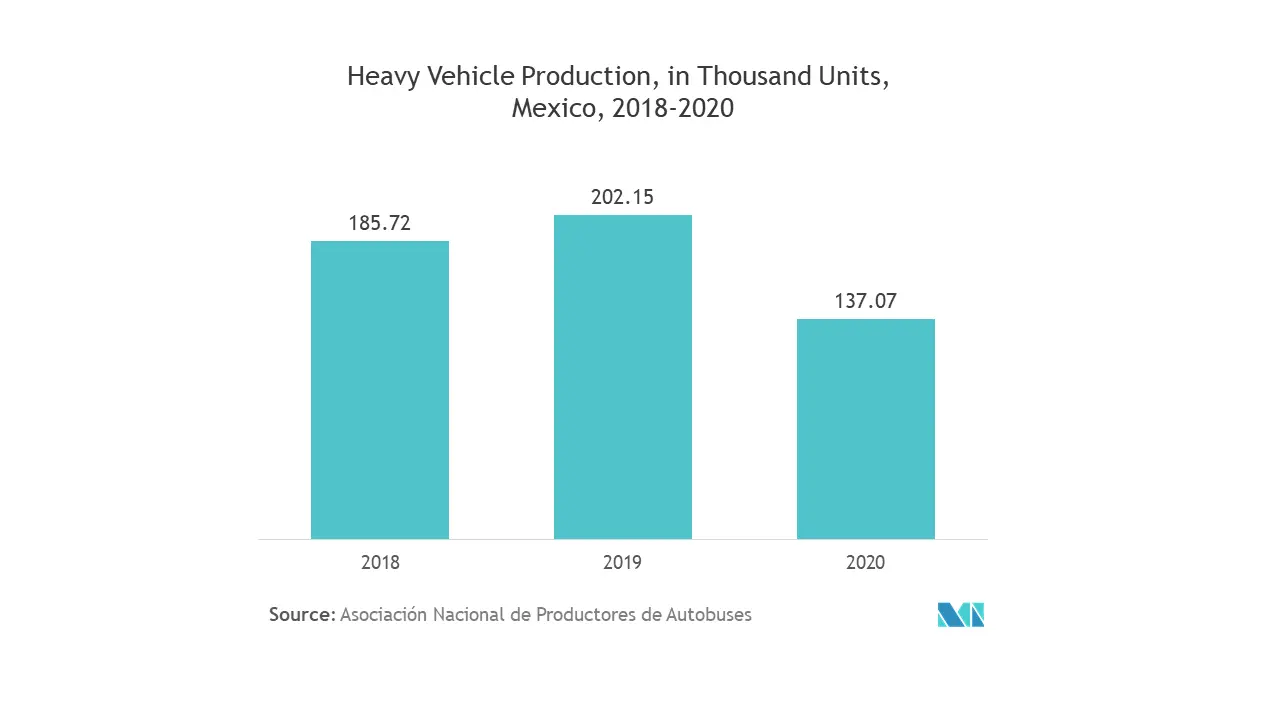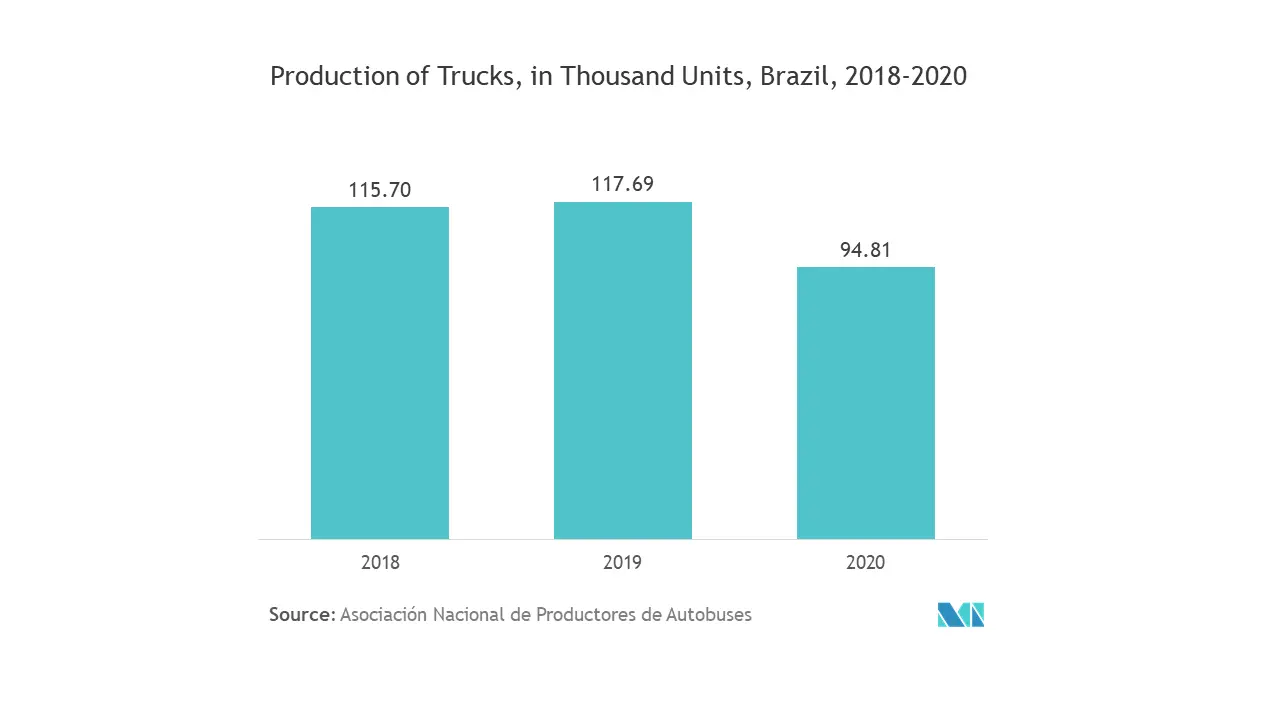Market Trends of LA AMH and Storage Systems Industry
This section covers the major market trends shaping the Latin America AMH & Storage Systems Market according to our research experts:
Automated Guided Vehicle Expected to Witness Significant Market Share
- The tow/tractor/tug type of AGV is a key element in intralogistics operations. It can be used for multiple tasks with minor customizations, such as a semi-automatic pickup in warehouses, transporting raw materials to the production line, or dispatching end-products for transportation (loading and unloading). However, According to Asociacion Nacional de Productores de Autobuses, Camiones y Tractocamiones Mexico witnessed a significant decrease by 65.08 thousand production units in heavy production vehicles, including tractors.
- Further, the investments are driving the market growth in the Latin American region. For instance, In October 2020, Amazon announced a USD 100 million logistics investment in opening new warehouses in Mexico, including its first shipping centers outside the populous capital area, to offer faster deliveries. The new sites include two fulfillment centers, one near the northern city of Monterrey and another near the central city of Guadalajara. Additionally, the company is also striving to make inroads in Brazil, where it recently opened its fifth and biggest fulfillment center in the country, with 100,000 square meters. All these investments are expected to drive the utilization of AGV in the warehouse.
- The boom of automation in the medium-sized industries and laboratories that need to handle smaller loads, compared to the large-scale manufacturers, is the primary factor driving the demand for Unit load type of AGVs.
- Further, the continuously increasing R&D expenditure and the rising number of production establishments in the region are driving the demand for automation in the mid-range industries worldwide, especially in the healthcare and pharmaceutical sectors.
- Moreover, the consumers in the region seek shorter delivery times, increasing the application of AGV in warehouses and distribution centers. In, addition advancements in technology have made AGV's better and smaller; lower costs and shortage of labor in some places have fueled the growth of the market studied.

Brazil Expected to Witness Significant Growth in the Market
- Due to the outbreak of COVID-19, the need for autonomous material handling has been becoming more significant in Brazil as more demanding tasks in industrial automation increase. At the same time, companies are facing labor shortages and challenges in implementing new social distancing requirements, thereby driving the market players to invest in product innovation.
- The country is witnessing various expansions. For instance, in January 2020, Material Handling Clark Brazil relocated its corporate headquarters to the Campinas Technology Centre. The strategic step aims to future growth in the Brazilian market and builds capacity for establishing a production facility in Brazil. Campinas, about 100 kilometers north of So Paulo, is a significant industrial and commercial center with various economic activities. Also, the company is expected to meet the country's increasing demand for Clark materials handling vehicles.
- Moreover, due to the high initial cost, vendors in the market studied have been providing more flexible carousels to cater to client-specific requirements. Such innovations in terms of products are expected to boost the adoption of carousels in the region.
- The market vendors catering to carousels are driving demand. For instance, SSI Schaefer offers carousels that can perform 1,000 picks per hour and 50% higher storage density. The SSI Carousel is a suitable solution for handling small parts along with medium to slow-moving products. These include pharmaceutical products, cosmetics, electronics components, media, and food, along with standard-sized and small parts.
- The launch of automated material handling equipment and vehicles, which increases the ease of handling pallets, is also expected to positively impact the adaptability of pallets by various warehouses in the region. However, In 2020, according to Associacao Nacional dos Fabricantes de Veículos Automotores, approximately 95 thousand trucks were produced in Brazil, a decrease of 19% compared to 2019, which could restrain the market for a considerable period.


